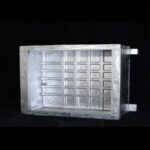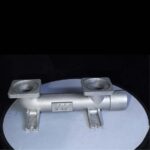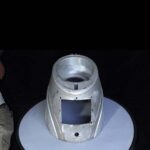- Aluminum Alloy Selection:
- Specify an aluminum alloy suitable for casting lighting fixtures, considering factors such as corrosion resistance, thermal conductivity, and ease of machining.
- Commonly used alloys include ADC12, A356, or specific proprietary alloys designed for casting lighting components.
- Dimensional Accuracy:
- Tight dimensional tolerances to ensure precise fit and alignment with other components in the lighting fixture assembly.
- Specifications for critical dimensions such as mounting points, mating surfaces, and electrical component housing.
- Surface Finish:
- Specify the desired surface finish to achieve the desired aesthetic appearance and enhance light reflection or diffusion.
- Surface treatment options may include powder coating, anodizing, polishing, or specialized finishes to provide corrosion resistance and durability.
- Mechanical Properties:
- Define target mechanical properties based on the specific application and installation requirements of the lighting fixture.
- Specifications for tensile strength, yield strength, elongation, and hardness to ensure structural integrity and resistance to mechanical stress.
- Chemical Composition:
- Control the chemical composition of the aluminum alloy to meet performance requirements and regulatory standards.
- Ensure compliance with industry specifications and regulations governing material composition and environmental considerations.
- Corrosion Resistance:
- Ensure that the aluminum castings exhibit excellent corrosion resistance to withstand exposure to moisture, UV radiation, and environmental factors.
- Specify corrosion-resistant coatings or treatments as needed for outdoor or harsh environment applications.
- Heat Dissipation:
- Design the casting to facilitate efficient heat dissipation from the lighting fixture’s LED or traditional light sources.
- Consideration of thermal conductivity and heat sink design to prevent overheating and prolong LED lifespan.
- Electrical Compatibility:
- Ensure that the casting design accommodates electrical components such as wiring, sockets, and connectors.
- Provide adequate insulation and grounding features to ensure electrical safety and compliance with regulatory standards.
- Precision Machining Allowances:
- Provide allowances for machining critical features and tolerances, if necessary, to achieve the required dimensional accuracy and surface finish.
- Quality Control and Certification:
- Implement rigorous quality control measures throughout the casting process to ensure consistency and reliability.
- Obtain certifications and documentation verifying material traceability, compliance with specifications, and adherence to industry standards (e.g., UL, CE).
- Packaging and Handling:
- Specify appropriate packaging methods to prevent damage during transportation and handling.
- Ensure proper labeling and identification for inventory management and traceability purposes.
- Documentation:
- Prepare comprehensive documentation including material certificates, inspection reports, quality control records, and technical specifications.
- Include detailed drawings or CAD models specifying dimensional, material, and surface finish requirements for the lighting fixture castings.
By adhering to these specifications, manufacturers can produce high-quality aluminum castings that meet the stringent performance, aesthetic, and safety standards required for lighting fixtures in various applications, including residential, commercial, and outdoor lighting.










